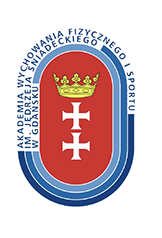Abstract
Introduction: The primary task of physical educators is to teach motor skills to beginners, and motor learning studies continually strive to find better ways to optimize the skill acquisition process. In line with this, our study aims to evaluate and compare the effectiveness of two learning methods, analogy learning and explicit learning, in promoting children's acquisition of novel motor skills. We specifically focus on skills that differ biomechanically and kinematically from skills learned through explicit instructions, and we also investigate how the physical form of the skill evolves with practice. Material and Methods: Forty-five right-handed healthy beginner male students (mean age 9.93 ±0.55 years; height 1.39 ±4.16 m; body mass 31.65±3.23 kg; beginner in basketball) participated in the study. Subjects were randomly allocated to an explicit learning condition (n = 15), an analogy learning condition (n = 15), or an uninstructed control condition (n = 15). Each participant performed ten free throws (FT) from a standing position, 3 meters away from the front of the basket board, utilizing a small ball, a customized rim with an inner diameter of 45.72 cm (18"), and an adapted net height of 2 meters. Attempts were recorded from 3 m away in a biomechanical laboratory with two-dimensional (2D) video data collection (i.e., using 240 Hz camera resolution). This comprehensive approach ensured the thoroughness and reliability of the study's results. Results: The independent ANOVA yielded a statistically significant effect across the three post-test groups: F (8,16) = 283.233, P = 0.001, η2 = 0.793. A statistically significant difference was observed across the three groups: F (8, 16) = 332.057, P = 0.001, η2 = 0.818. Discussion: The analogy group's superior performance in the skill taught is a significant finding of this research. It provides valuable insights into the effectiveness of analogy learning in promoting children's acquisition of novel motor skills, compared to explicit learning, where the learners achieved lower scores. Conclusions: The analogy learning training method is recommended for children aged 10–12 willing to learn FT in basketball. The findings may illuminate the innovative instructional approach for coaches seeking accelerated motor skill acquisition.
Recommended Citation
Afrouzeh M, Konukman F, Muza RM, Afroozeh MS, Tufekcioglu E, Filiz B. The effects of analogy teaching on sport skill acquisition in children. Balt J Health Phys Act. 2024;16(2):Article6. DOI: 10.29359/BJHPA.16.2.06
Author ORCID Identifier
Mohsen Afrouzeh 0000-0001-6209-9884
Ferman Konukman 0000-0001-9508-8874
Rabiu Muazu Musa 0000-0001-5332-1770
Mohammad Sadeq Afroozeh 0000-0001-5648-812X
Bijen Filiz 0000-0001-5863-3861
Ertan Tufekcioglu 0000-0002-9660-5009
Creative Commons License

This work is licensed under a Creative Commons Attribution-Noncommercial-No Derivative Works 4.0 License.




